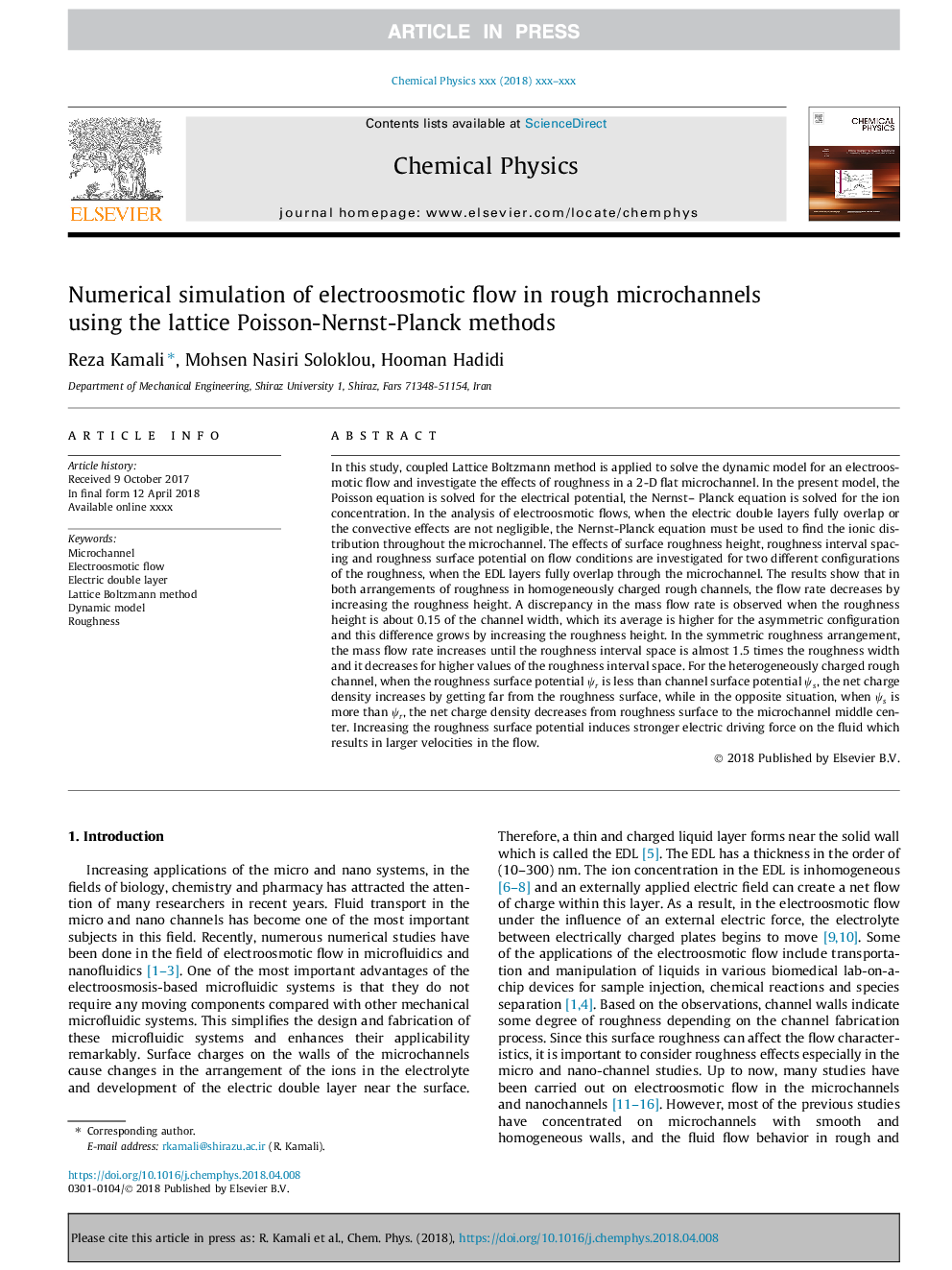| کد مقاله | کد نشریه | سال انتشار | مقاله انگلیسی | نسخه تمام متن |
|---|---|---|---|---|
| 7837164 | 1504165 | 2018 | 9 صفحه PDF | دانلود رایگان |
عنوان انگلیسی مقاله ISI
Numerical simulation of electroosmotic flow in rough microchannels using the lattice Poisson-Nernst-Planck methods
دانلود مقاله + سفارش ترجمه
دانلود مقاله ISI انگلیسی
رایگان برای ایرانیان
کلمات کلیدی
موضوعات مرتبط
مهندسی و علوم پایه
شیمی
شیمی تئوریک و عملی
پیش نمایش صفحه اول مقاله

چکیده انگلیسی
In this study, coupled Lattice Boltzmann method is applied to solve the dynamic model for an electroosmotic flow and investigate the effects of roughness in a 2-D flat microchannel. In the present model, the Poisson equation is solved for the electrical potential, the Nernst- Planck equation is solved for the ion concentration. In the analysis of electroosmotic flows, when the electric double layers fully overlap or the convective effects are not negligible, the Nernst-Planck equation must be used to find the ionic distribution throughout the microchannel. The effects of surface roughness height, roughness interval spacing and roughness surface potential on flow conditions are investigated for two different configurations of the roughness, when the EDL layers fully overlap through the microchannel. The results show that in both arrangements of roughness in homogeneously charged rough channels, the flow rate decreases by increasing the roughness height. A discrepancy in the mass flow rate is observed when the roughness height is about 0.15 of the channel width, which its average is higher for the asymmetric configuration and this difference grows by increasing the roughness height. In the symmetric roughness arrangement, the mass flow rate increases until the roughness interval space is almost 1.5 times the roughness width and it decreases for higher values of the roughness interval space. For the heterogeneously charged rough channel, when the roughness surface potential Ïr is less than channel surface potential Ïs, the net charge density increases by getting far from the roughness surface, while in the opposite situation, when Ïs is more than Ïr, the net charge density decreases from roughness surface to the microchannel middle center. Increasing the roughness surface potential induces stronger electric driving force on the fluid which results in larger velocities in the flow.
ناشر
Database: Elsevier - ScienceDirect (ساینس دایرکت)
Journal: Chemical Physics - Volume 507, 11 May 2018, Pages 1-9
Journal: Chemical Physics - Volume 507, 11 May 2018, Pages 1-9
نویسندگان
Reza Kamali, Mohsen Nasiri Soloklou, Hooman Hadidi,